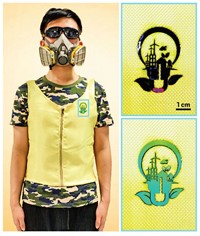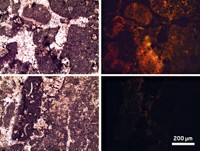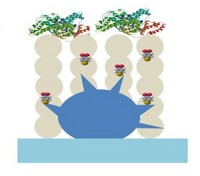Advertisement
Grab your lab coat. Let's get started
Welcome!
Welcome!
Create an account below to get 6 C&EN articles per month, receive newsletters and more - all free.
It seems this is your first time logging in online. Please enter the following information to continue.
As an ACS member you automatically get access to this site. All we need is few more details to create your reading experience.
Not you? Sign in with a different account.
Not you? Sign in with a different account.
ERROR 1
ERROR 1
ERROR 2
ERROR 2
ERROR 2
ERROR 2
ERROR 2
Password and Confirm password must match.
If you have an ACS member number, please enter it here so we can link this account to your membership. (optional)
ERROR 2
ACS values your privacy. By submitting your information, you are gaining access to C&EN and subscribing to our weekly newsletter. We use the information you provide to make your reading experience better, and we will never sell your data to third party members.
Analytical Chemistry
Gold Nanowires Sense Gas
Nanomaterials: Cheap method uses carbon nanotubes as frame to build wires around
by Katherine Bourzac
February 8, 2012

Using carbon nanotubes as scaffolds, researchers have coaxed gold to assemble into nanowires (J. Am. Chem. Soc., DOI: 10.1021/ja210278u). They say that these wires could serve as an inexpensive material for detecting hydrogen sulfide, a poisonous gas commonly found in natural gas.
The most common analytical method to sense gases is gas chromatography. Unfortunately, the necessary equipment is expensive and bulky. Some researchers think that chip-based sensors that rely on nanomaterials to detect gases could be more portable and less expensive. With their small size, the chips could be worn on clothes to help monitor industrial workers’ exposure, says Alexander Star, a chemist at the University of Pittsburgh.
For detecting hydrogen sulfide, Star thought gold nanomaterials would be ideal because gold has a high affinity for sulfur, and because the metal’s conductivity changes when it interacts with sulfur. But the challenge, as with so many nanomaterials, was finding simple, practical ways of making them and of building devices with them.
Star and his colleagues developed a self-assembly method that uses scaffolds to grow gold nanowires. They experimented with scaffolds of carbon nanotubes and graphene treated with various coatings and used computer modeling, along with X-ray diffraction and transmission electron microscopy, to study the self-assembly process. They also tested the resulting materials’ responses to hydrogen sulfide. In the end, the best sensors came from scaffolds made of single-walled carbon nanotubes coated with 1-pyrenesulfonic acid.
To produce gold nanowires, the researchers suspend the nanotubes in water with chloroauric acid, a gold-containing acid. As they stir and heat the suspension in the presence of a base, the gold reduces and forms nanoparticles on the outer walls of the nanotubes. The 1-pyrenesulfonic acid coating helps the particles slide along the carbon surface to meet up with others, eventually forming wirelike structures. The chemists then heat the mixture to weld the gold particles into gold nanowires. The result is a highly conductive jumble of gold nanowires and carbon nanotubes.
Reginald Penner, a chemist at the University of California, Irvine, calls the nanowelding of the gold nanowires “strikingly original.”
To test the nanowires’ ability to detect hydrogen sulfide, Star and his colleagues cast a film of the composite material onto a chip patterned with gold electrodes. The conductivity of the material dropped significantly in the presence of hydrogen sulfide, allowing detection of the gas at levels as low as 5 ppb—a detection level comparable to that of existing sensing techniques. The Pittsburgh researchers also could detect hydrogen sulfide in complex mixtures of gases simulating natural gas. Star says the group will now test the chips’ detection limits using real samples from gas wells.





Join the conversation
Contact the reporter
Submit a Letter to the Editor for publication
Engage with us on Twitter